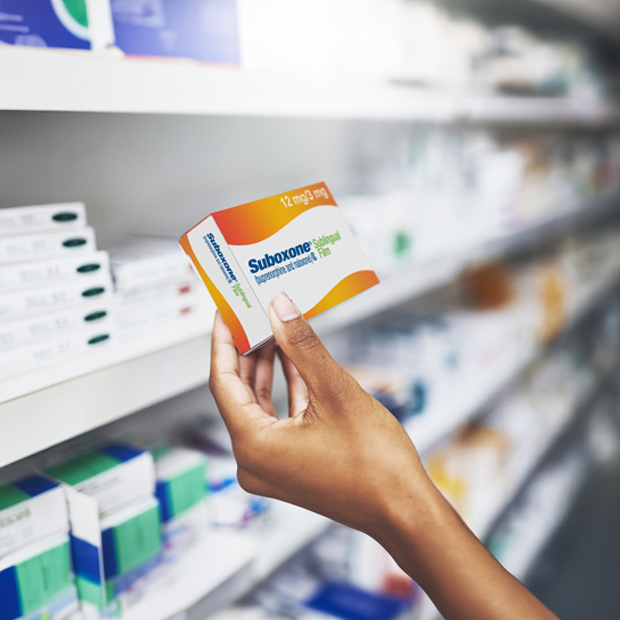Phone Today
Medications for Opioid Use Disorder (MOUD)
Proven Treatment for Opioid Addiction.

Medications for Opioid Use Disorder (MOUD)
Proven Treatment for Opioid Addiction.
Not just a prescription for medication alone, Medications for Opioid Use Disorder (MOUD) also focuses on on medical, behavioral and social counseling in order to provide long-lasting, positive results for the patient. This critical combination provides the patient with the most effective treatment, allowing for improved chances of long-term recovery success.
When compared to the high cost of continued illegal drug use, or residential treatment programs, or the high rate of relapse associated with programs unsuited to the individual, Medication-Assisted Treatment is a low cost option with improved effectiveness.
One of MOUD's strongest advantages is that, through counseling, the individual is able to learn how to recover and heal without having to disrupt their day-to-day life. This means that the patient can utilize skills learned through counseling in order to work within their current environment, addressing changes according to present circumstances. By contrast, patients removed from their environment in order to receive treatment might struggle with learning how to cope and properly respond to stimuli associated with their past behavior.
Methadone Maintenance Treatment (MMT) has 50 years of research behind it, making it one of the longest-studied and most regulated medications for treating opioid withdrawal symptoms. MMT is now recognized as a key component of a comprehensive opioid addiction treatment program and has solid evidence of overall effectiveness.
With proper use, methadone can help individuals struggling with heroin addiction, fentanyl addiction, or addiction to other painkillers. Methadone allows patients in recovery to function normally in daily activities, abstain from illicit drugs, and manage withdrawal symptoms and cravings.
National Institute on Drug Abuse (NIDA)
A U.S. federal-government research institute whose mission is to advance science on the causes and consequences of drug use and addiction and to apply that knowledge to improve individual and public health.
Substance Abuse and Mental Health Services Administration (SAMHSA)
A branch of the U.S. Department of Health and Human Services charged with improving the quality and availability of treatment and rehabilitative services in order to reduce illness, death, disability, and the cost to society resulting from substance abuse and mental illnesses.

Buprenorphine is a medication that's FDA-approved, highly studied and regulated. In a Medication-Assisted Treatment Program, it's used to help individuals recover from opioid addiction by acting as a stabilizer in the body rather than as a narcotic. Suboxone® is the commercial name for buprenorphine combined with naloxone for the treatment of opioid addiction.
Extended-release versions of buprenorphine can be a convenient option for many, and because the dose is controlled, it cannot be misused or diverted for illegal use. Also, buprenorphine treatment will not interfere with the patient’s work, school, or family schedule.

Whether the medication you start with MOUD is methadone, buprenorphine, or Suboxone®, Medication-Assisted Treatment is still one of the most researched treatment approaches for safety and efficacy. If you're looking for an opioid treatment program, MOUD could be the right choice for you if:
No. Methadone and buprenorphine are both FDA-approved and highly studied, highly regulated medications that are used to assist in the opioid addiction recovery process. They act as stabilizers in the body rather than a narcotic, helping patients function physically, emotionally and intellectually without impairment. Neither methadone nor buprenorphine produce mood swings, drowsiness, or narcotic effects. The patients using these medications are able to drive, go to work, spend time with family and friends, and lead normal lives.
Methadone maintenance is not an addiction, but a physical dependence required to maintain stability. Painkillers and heroin, on the other hand, destabilize the individual and lead them to the severe consequences of high-risk behaviors.
No. Methadone maintenance results in a physical dependence, not an addiction, and it does not produce the addictive behaviors of compulsion. Addiction is the compulsive use of a drug despite negative consequences, while a physical dependence is required to maintain physical stability – think of a diabetic who is dependent on insulin, for example.
Yes. Methadone does not impair child development or cognitive functioning when it's taken during pregnancy. After years of studies, scientists have concluded that there is no lasting harm to the child resulting from exposure to methadone during development and there is significant reduction in the risk of illness or death for both mother and child.
Some patients experience mild side effects like nausea, itchy skin, or restlessness. Rarely, patients might experience more serious side effects. Decades of study and millions of patients have shown that, overall, methadone improves physical health after taking methadone and are able to address pre-existing conditions properly once stabilized. That can mean significant improvement in healthcare, nutrition, and wellness habits.
Patients should be in treatment for at least 12 months. Studies indicate that a greater length of time in treatment delivers more positive results, with less than 90 days being of limited effectiveness and an increase in positive results occurring at the milestones for a patient's first, second, and third years. Since treatment differs from person to person, however, the exact duration is always determined by the needs of the individual.
Yes, you are able to drive and operate machinery while using methadone as prescribed. Research indicated that patients on methadone have normal functioning, including the ability to concentrate, normal reaction time, normal hand-eye coordination, and accurate responses to emergencies.